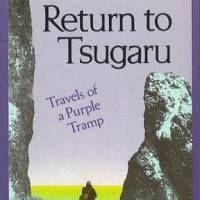In the northernmost reaches of Honshu, Japan's largest island, lies Tsugaru, an area isolated even from its neighbors in Aomori Prefecture, let alone the rest of Japan. As a celebrated author and son of Tsugaru himself, Dazai Osamu must have seemed the perfect choice for this 1944 volume in Oyama Shoten's series of books on regional diversity. But a few pages into "Return to Tsugaru," the result of this commission, Dazai warns the reader that they shouldn't expect to learn too much about Tsugaru itself. Instead, he will be concentrating on his own chief interest: "love, for want of a better word ... the human heart in its relations with other hearts."
Return to Tsugaru, by Osamu Dazai
Translated by James Westerhoven
236 pages.
Kodansha, Fiction.
Most of Dazai's information about Tsugaru is in the form of long quotations from other authors. He is more concerned with people than place, and the book unfolds as a series of encounters with figures from the author's childhood. "Return to Tsugaru" shouldn't be mistaken for objective autobiography, though — Dazai reportedly considered it to be a novel. Translator James Westerhoven's introduction is merciless in its examination of this issue, as though he were rummaging through a magician's papers in search of secrets never meant to be shared.
Garrulous, self-indulgent and mostly unconcerned with the scenery, "Return to Tsugaru" is invaluable as another perspective on Dazai's sheer talent as a stylist and raconteur.
Read archived reviews of Japanese classics at jtimes.jp/essential.


















With your current subscription plan you can comment on stories. However, before writing your first comment, please create a display name in the Profile section of your subscriber account page.